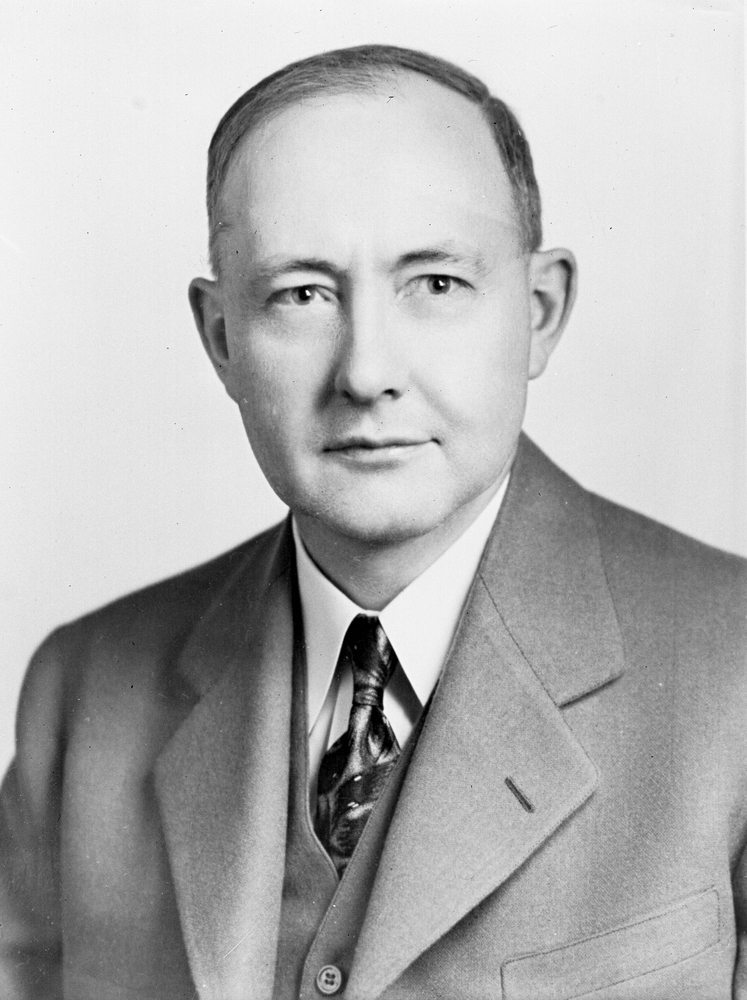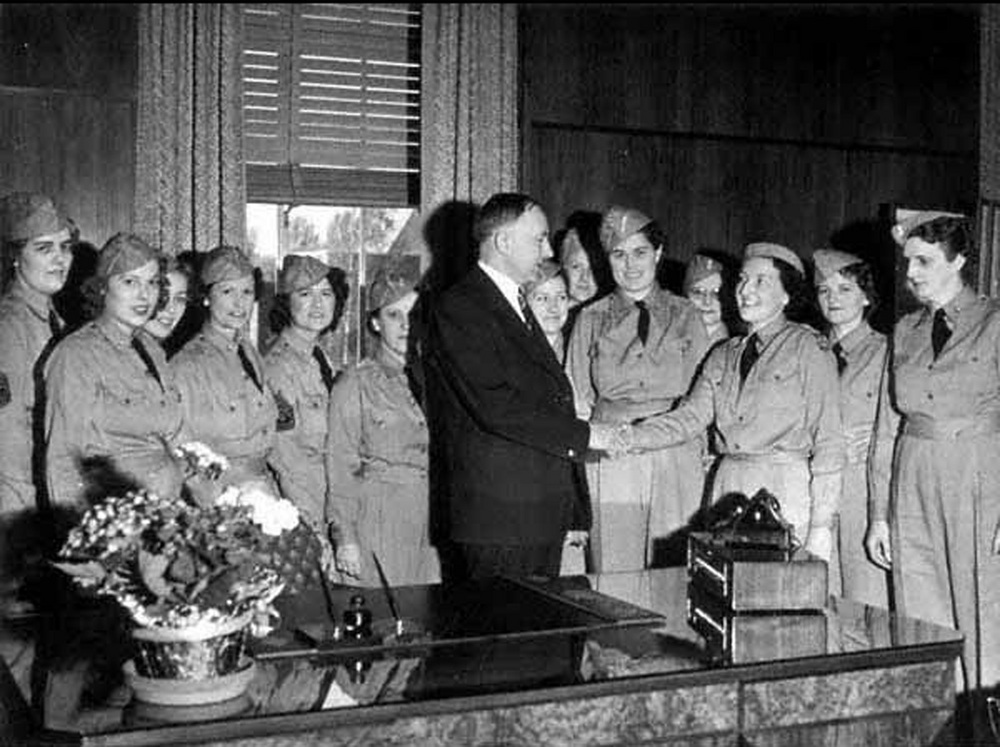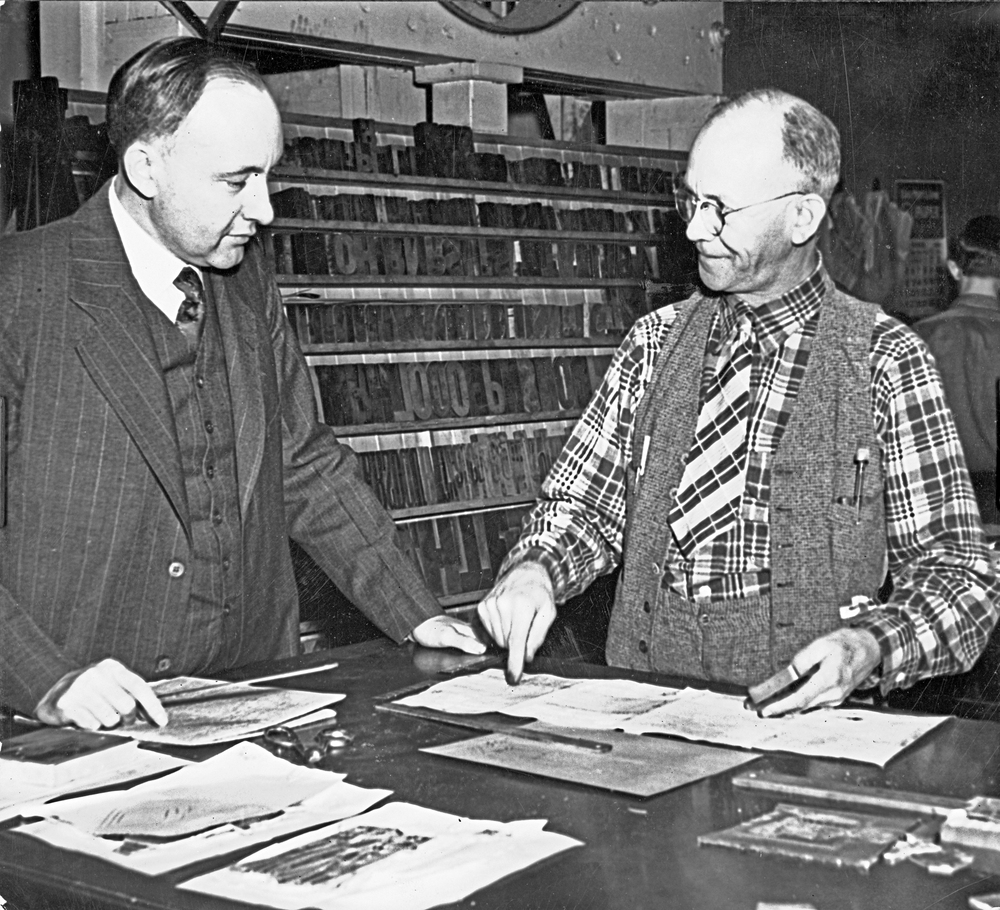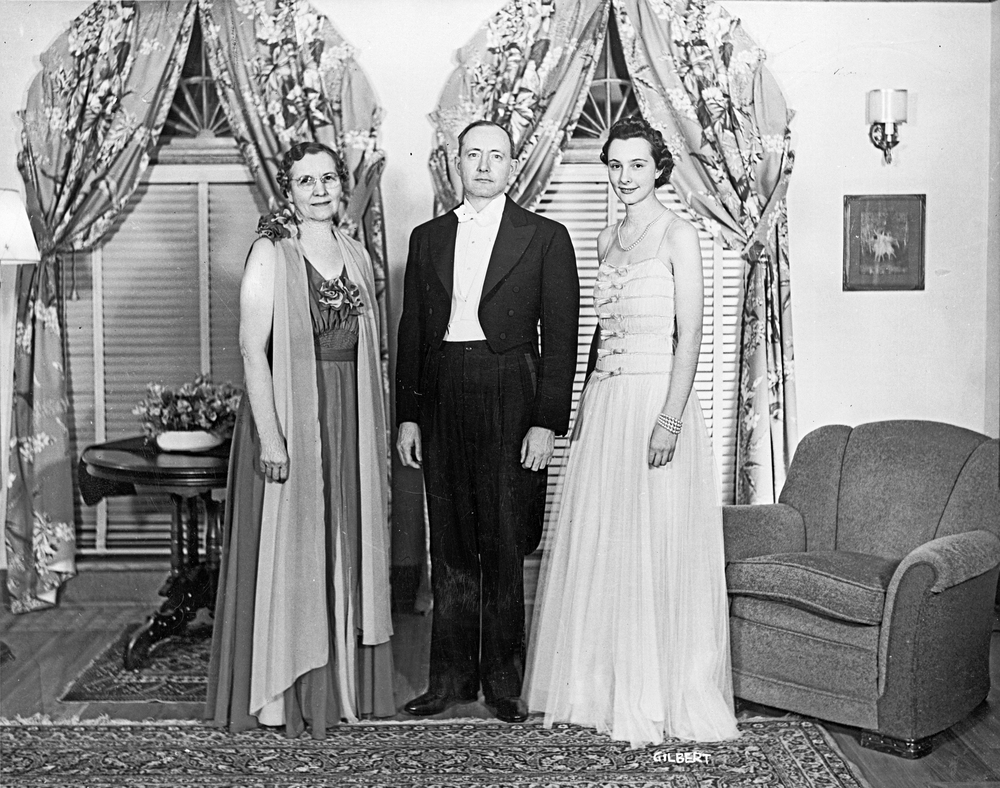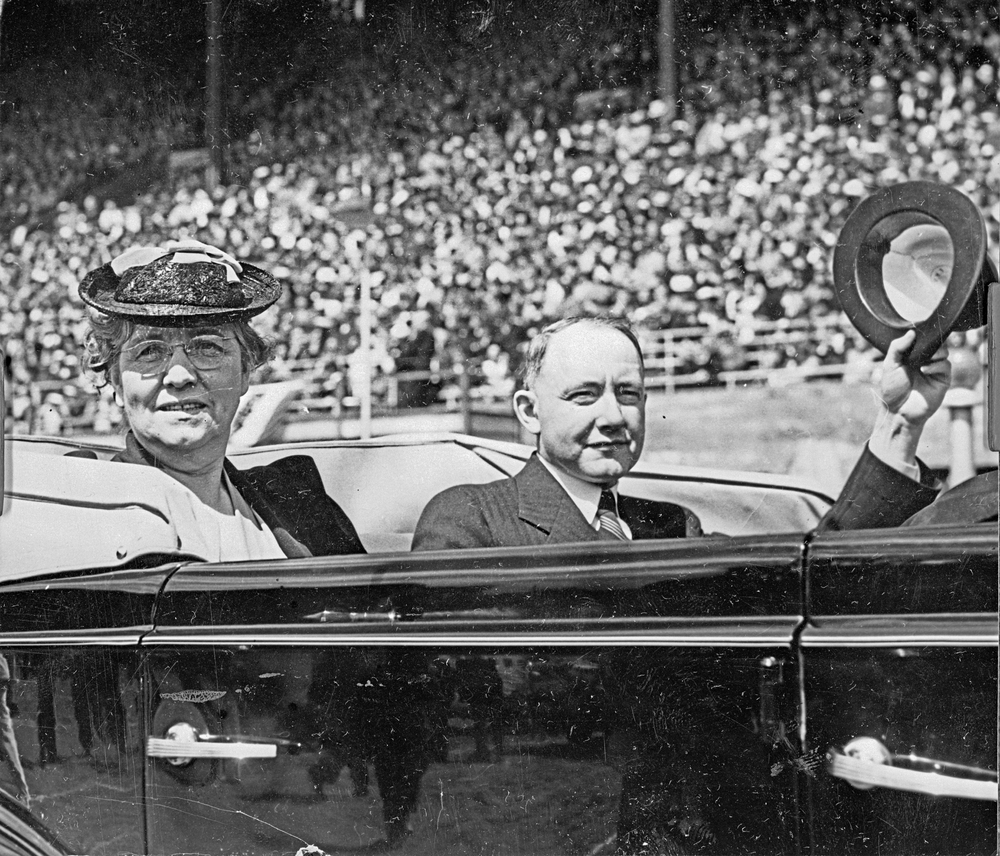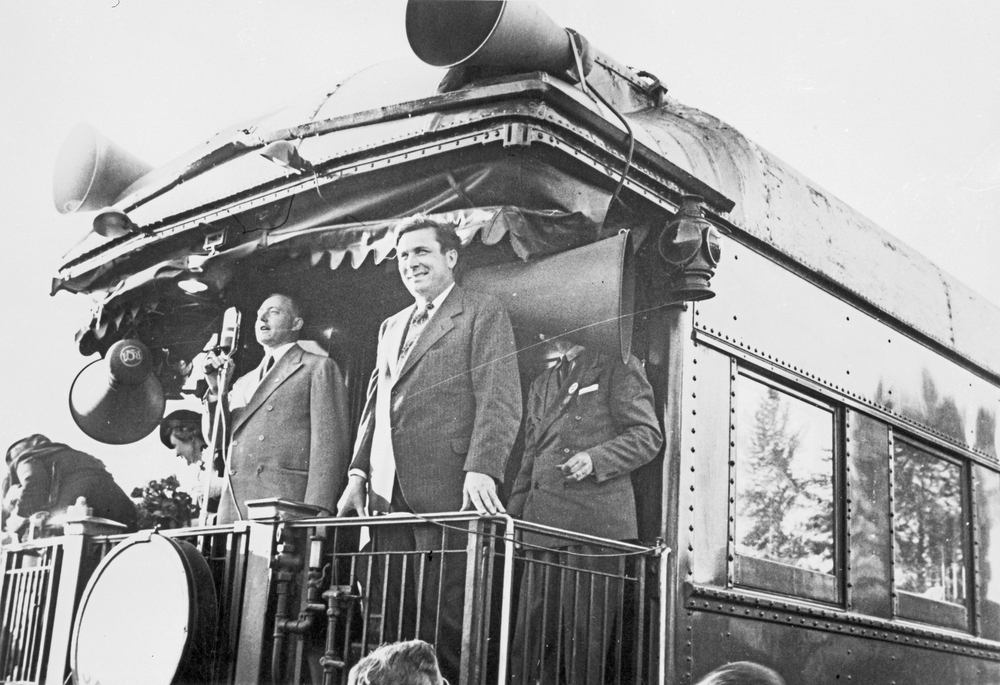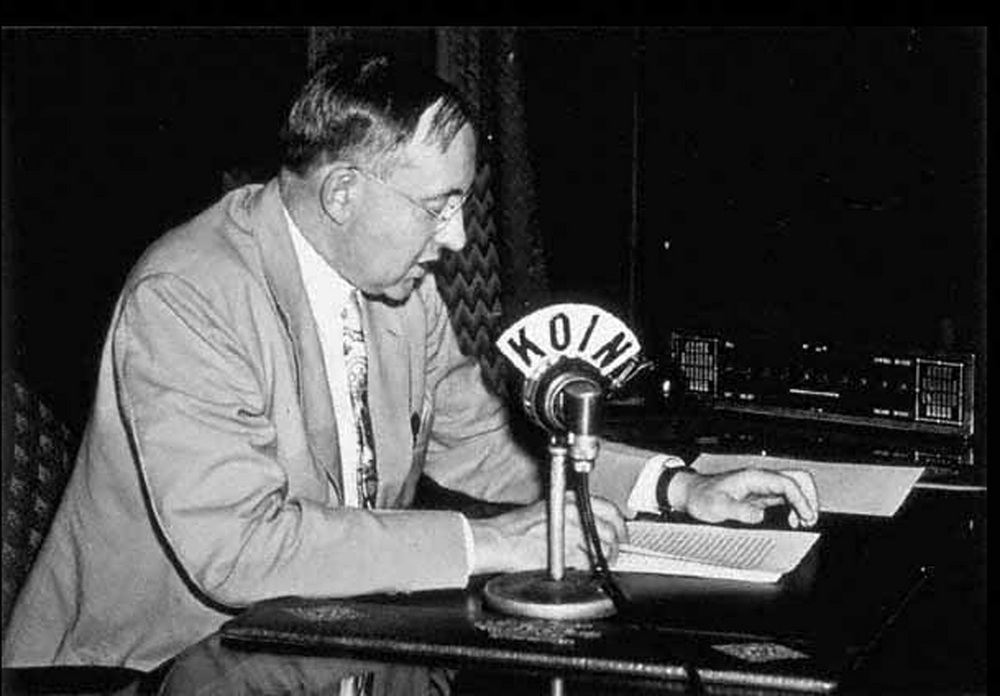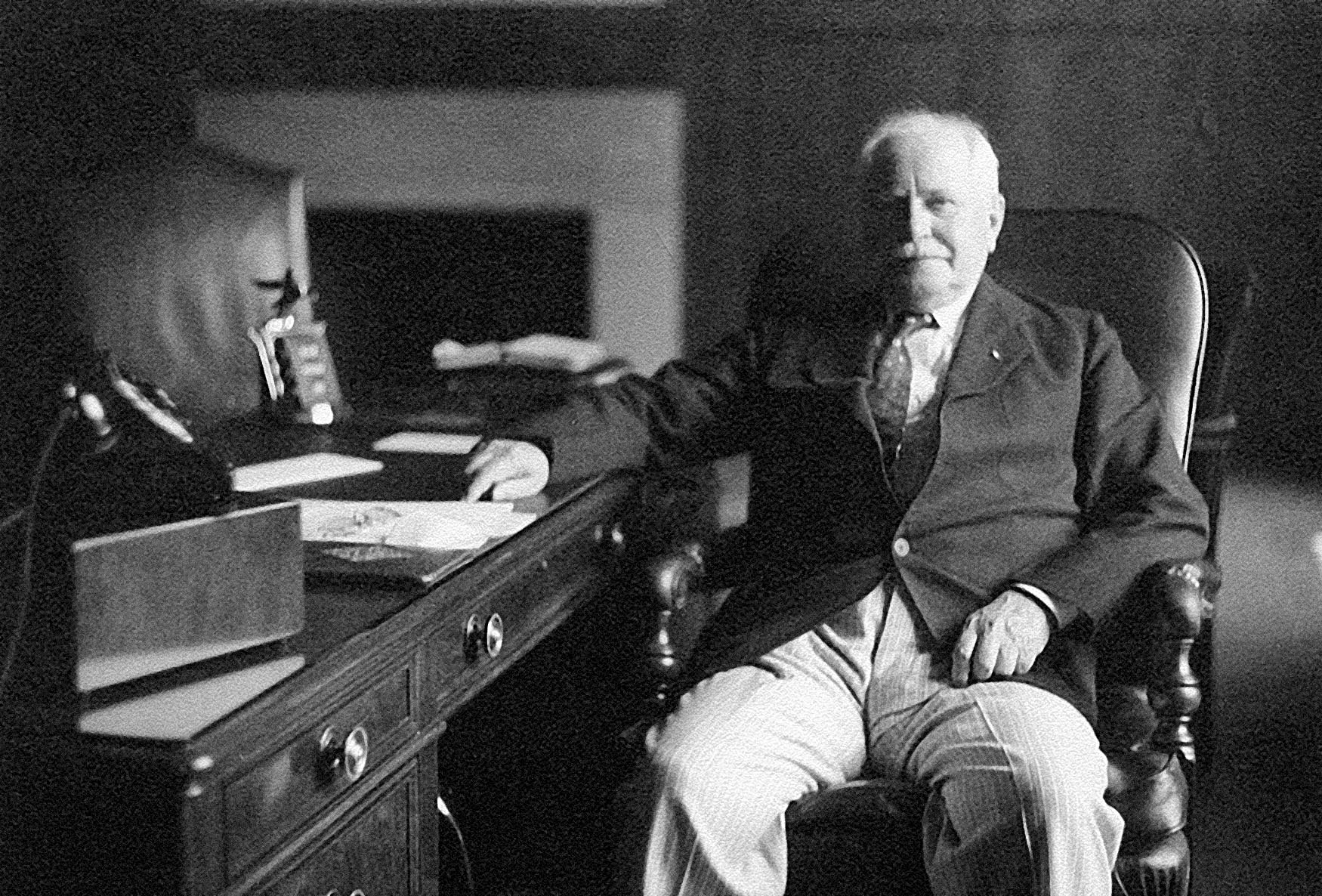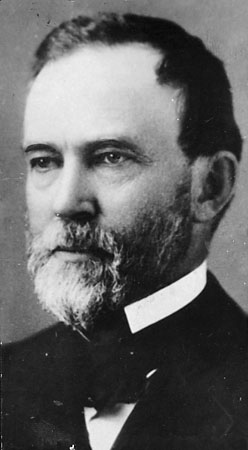Charles A. Sprague published and edited The Oregon Statesman for forty years. During that period, he was Oregon's leading statesman, serving as governor, alternate delegate to the United Nations, and, throughout the mid-20th century, speaking for the progressive wing of the Republican Party.
Born in 1887 in Kansas, Sprague was raised and educated in Iowa. He taught school there briefly before moving to Waitsburg, Washington, in 1910 to be superintendent of schools. He married Blanche Chamberlain, a Waitsburg teacher; from 1913 to 1915 they lived in Olympia, where Sprague was assistant state school superintendent.
Sprague debated a career in politics or newspapering, and in 1915 purchased the Ritzville Journal-Times in the wheat country of southeastern Washington, which he edited until 1925. He adopted the progressive politics of Theodore Roosevelt, and elements of progressivism marked his entire career.
After a stint (1925-1929) as one-third owner of the Corvallis Gazette-Times, Sprague moved to Salem, where he picked up two-thirds ownership of the Oregon Statesman, the state's second-oldest daily. It became his platform and the foundation for his reputation in Oregon journalism and politics. In 1939, he purchased a one-third interest in the paper.
Oregon's capital was a perfect location for Sprague. He immediately plunged into politics and tangled with the crusty editor of the Salem Capital-Journal, George Putnam. The afternoon Capital-Journal had a sizable circulation lead in 1929, and it took Sprague's morning paper two decades to overtake it. By the mid-1930s, Sprague was attracting statewide attention with his editorials and had emerged as a moderate Republican in the Willamette Valley.
Sprague was a surprise entry in the 1938 governor's race, the beneficiary of a split in the Democratic Party. Governor Charles Martin, a former Democratic congressman, broke with President Franklin D. Roosevelt, and New Deal Democrats backed little-known LaGrande attorney Henry Hess. The state's Republican establishment liked Martin and expected him to be re-elected. But Hess upset Martin, and Sprague won the November election, branding Hess as an unreliable liberal and offering himself as a moderate.
The beginning of World War II overshadowed Sprague's term as governor. Concentrating on bringing Oregon into the war effort, he proved to be a poor campaigner and was beaten in the 1942 Republican primary by popular Secretary of State Earl Snell. Sprague's term was marked by the state's first forestry rules and the start of reforestation of the Tillamook Burn.
Returning to the Statesman in 1943, Sprague began his page-one column, "It Seems To Me," which ran daily for twenty-five years and firmly established him as the state's most prestigious editor. The column was required reading for state politicians and bureaucrats, and it was often referred to in legislative debate. Sprague ranged in his column from analyzing international relations to musing about hikes near his cabin on the Little North Fork of the Santiam River. A lifelong hiker, he climbed several of the major peaks in Oregon and Washington.
In a final fling at politics, Sprague lost the 1944 Republican primary for U.S. Senate to timber lobbyist Guy Cordon. He remained a staunch Republican, but in later years was receptive to Democratic candidates and policies. President Harry S. Truman appointed him in 1952 as an alternate delegate to the United Nations, where he was alternate to Eleanor Roosevelt. In 1957-1960, he was a member of the Commission on the Rights, Liberties, and Responsibilities of the American Indian, sponsored by the Fund for the Republic. He co-chaired with former Governor Robert Holmes a state commission on organization of the executive department in 1960, and in 1960-1961 he served on the state's Constitutional Revision Commission.
Sprague's intense involvement in civil liberties began as World War II ended. His editorials opposed forces trying to prevent Japanese Americans from returning to their homes following wartime incarceration. He led Oregon newspapers' opposition to McCarthyism in the 1950s, and in 1962 was the first recipient of the E.B. MacNaughton Award of the Oregon chapter of the American Civil Liberties Union.
Non-smoker Sprague contracted lung cancer and underwent surgery in November 1968. He resumed his column until December 30, when he returned to the hospital. He died at age eighty-one on March 13, 1969. In 1973, the Gannett Corp. bought the Statesman and Capital-Journal and merged them into the Salem Statesman-Journal.
-
![]()
Charles Sprague (1887-1969).
Oreg. Hist. Soc. Research Library, bb003863
-
![Charles Sprague with members of the Women's Ambulance Corps, 1941.]()
Charles Sprague.
Charles Sprague with members of the Women's Ambulance Corps, 1941. Oreg. Hist. Soc. Research Lib., OrHi 97674
-
![]()
Governor Charles Sprague (left).
Oreg. Hist. Soc. Research Library, bb003859
-
![]()
Governor Charles Sprague with his wife Blanche Chamberlain and his daughter Martha .
Oreg. Hist. Soc. Research Library, bb003860
-
![]()
Charles Sprague with his wife Blanche.
Oreg. Hist. Soc. Research Lib., bb003861
-
![]()
Charles Sprague.
Oreg. Hist. Soc. Research Lib., bb003862
-
![Charles Sprague during KOIN radio broadcast, 1942.]()
Charles Sprague.
Charles Sprague during KOIN radio broadcast, 1942. Oreg. Hist. Soc. Research Lib., OrHi 97670
Related Entries
-
![Charles Martin (1863-1946)]()
Charles Martin (1863-1946)
By early May 1938, as his reelection bid faltered in the primary, Charl…
-
![Oregon Statesman]()
Oregon Statesman
Throughout its history, the Oregon Statesman has been a chronicler of O…
-
![Sylvester Pennoyer (1831-1902)]()
Sylvester Pennoyer (1831-1902)
Sylvester Pennoyer was a Democratic governor (1887-1895) and mayor of P…
-
![Tillamook Burn]()
Tillamook Burn
The Tillamook Burn was a catastrophic series of large forest fires in t…
-
![Walter Pierce (1861-1954)]()
Walter Pierce (1861-1954)
Walter Pierce's long public career extended from the 1890s to the polit…
Related Historical Records
Map This on the Oregon History WayFinder
The Oregon History Wayfinder is an interactive map that identifies significant places, people, and events in Oregon history.
Further Reading
McKay, Floyd J. "Charles Sprague’s Internal Wars: Civil Liberties Challenges of an Editor and Governor." Oregon Historical Quarterly 96 (Winter 1996-1996): 326-61.
McKay, Floyd J. An Editor for Oregon: Charles A. Sprague and the Politics of Change. Corvallis: Oregon State University Press, 1998.

